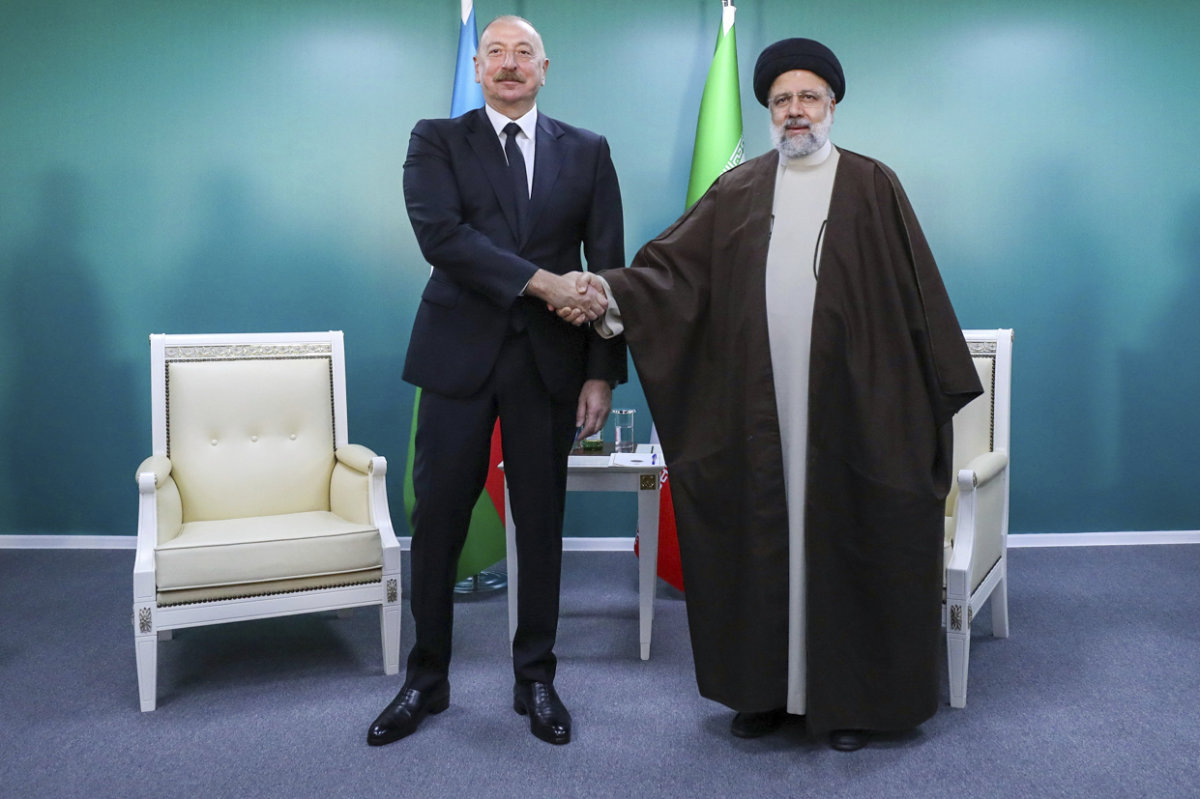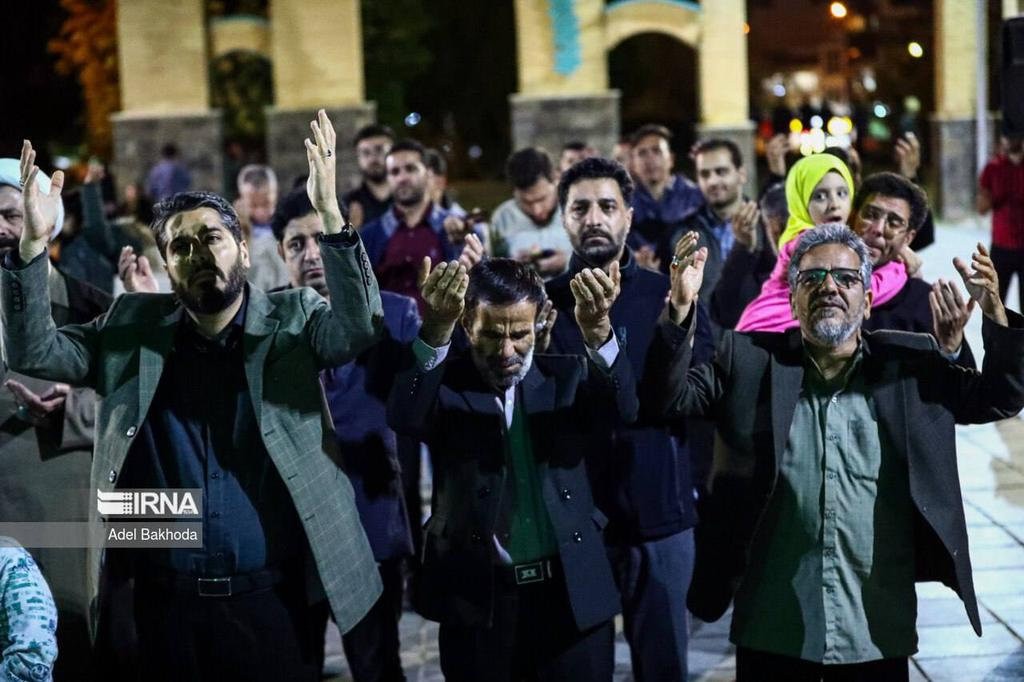JERUSALEM: Dozens of family members of hostages held by Hamas stormed a committee meeting in Israel’s parliament Monday, demanding a deal to win their loved ones’ release, as European foreign ministers joined growing international calls for Israel to negotiate on the creation of a Palestinian state after the war.
The developments showed the increasing pressure on Israeli Prime Minister Benjamin Netanyahu, who has dug in on both fronts. He has insisted to the Israeli public that pursuing the devastating offensive in Gaza is the only way to bring the hostages home. At the same time, he has rejected the United States’ vision for a postwar resolution, saying he will never allow a Palestinian state.
The dispute over Gaza’s future pits Israel against its top ally and much of the international community. It also poses a major obstacle to plans for postwar governance or reconstruction of the coastal territory, large parts of which have been left unlivable by Israeli bombardment.
In other developments, Israeli strikes and shelling intensified in and around the southern city of Khan Younis, sending Palestinian families fleeing south in pickup trucks and donkey carts loaded with possessions.
In the city, which has been a battle zone for weeks, people dug graves for the dead inside the yard of Al-Nasser Hospital as staff struggled to deal with dozens of newly killed and wounded, including children. Health care workers said strikes hit at least four schools sheltering displaced people on the city’s western edges, including two inside a coastal strip that Israel had declared a safe zone for people fleeing.
Gaza’s Internet and phone networks collapsed again Monday for the 10th time during the war. The repeated blackouts severely hamper distribution of aid that’s essential for the survival of the territory’s population of 2.3 million, UN officials said. The loss of service also prevents Palestinians from communicating with each other and the outside world.
Netanyahu has vowed to continue the offensive until “complete victory” over Hamas and to return all remaining hostages after the Oct. 7 rampage in southern Israel that triggered the war. In that attack, some 1,200 people were killed and Hamas and other militants abducted around 250 people.
Israelis are increasingly divided on the question of whether it’s possible to do either.
Around 100 hostages were freed under a weeklong ceasefire deal in November in exchange for the release of Palestinians imprisoned by Israel. Around 130 remain captive, but a number have since been confirmed dead. Hamas has said it will free more captives only in exchange for an end to the war and the release of thousands of Palestinian prisoners.
Netanyahu has ruled out such an agreement, but anger is rising among hostages’ families. Relatives and other protesters set up a tent camp outside Netanyahu’s residence in Jerusalem, vowing to remain until a deal is reached.
On Monday, dozens of family members of the hostages stormed into a gathering of the Knesset’s finance committee, holding up signs and yelling, “You won’t sit here while they are dying there!”
“These are our children!” they shouted. Some had to be physically restrained, and at least one person was escorted out.
OVER 25,000 KILLED IN GAZA
Israel’s offensive has killed at least 25,295 Palestinians in Gaza and wounded more than 60,000, according to the Gaza Health Ministry. The ministry does not distinguish between civilians and combatants but says around two-thirds of those killed were women and children.
Residents in Khan Younis reported bombardment on all sides of the city. At Nasser Hospital, Ayman Abu Abaid, the head of surgery, told Al Jazeera TV early Monday that at least 50 dead and more than 100 wounded had been brought to the facility.
Ashraf Al-Qudra, spokesman for the Health Ministry, said Israeli troops had stormed Al-Khair Hospital and detained the medical staff, the latest hospital that troops have seized during the conflict. The hospital is just inside the safe zone at Muwasi, a rural coastal strip west of Khan Younis, where the Israeli military had said it would not carry out operations.
Volunteers with the Red Crescent said strikes hit four schools west of Khan Younis — two of them inside the Muwasi zone — causing an unknown number of casualties. They said the organization’s ambulances couldn’t reach the sites.
Families streamed out of Khan Younis along the coastal highway, some walking, some loading blankets and possessions into vehicles. They headed toward Rafah, the tiny sliver at the extreme southern end of Gaza where well over 1 million people are already crowded, many living in tents that have filled the streets.
As he fled Khan Younis with his family, Ahmad Shurrab said he had been displaced multiple times. “Where should I go? Should I go to Rafah? Rafah is like one street. What do they want from us?” he shouted.
Some 85 percent of the Gaza population has been driven from their homes by the war. UN officials say 1 in 4 people in Gaza is starving as the fighting and Israeli restrictions hinder the delivery of humanitarian aid. Only 15 bakeries are working across the Gaza Strip, all of them in either Rafah or the central town of Deir Al-Balah, the UN said.
The Israeli military says it has killed around 9,000 militants in its offensive, without providing evidence, and blames the high civilian death toll on Hamas because it operates in dense residential areas.
The war has also stoked tensions across the region, with Iran-backed groups in Lebanon, Syria, Iraq and Yemen attacking Israeli and US targets.
NETANYAHU UNDER MOUNTING PRESSURE
Netanyahu, whose popularity has plummeted since Oct. 7, faces pressure from the US to shift to more precise military operations and do more to facilitate humanitarian aid into Gaza.
The United States is also calling for a reformed Palestinian Authority to govern Gaza after the war and for negotiations to start on a two-state solution. The authority currently governs pockets of the Israeli-occupied West Bank and was ejected from Gaza in 2007 when Hamas took power.
Netanyahu has rejected both the entry of the Palestinian Authority and the creation of a Palestinian state. His governing coalition is beholden to far-right parties that want to step up the offensive, encourage the emigration of hundreds of thousands of Palestinians from Gaza and re-establish Jewish settlements there.
At a meeting in Brussels, European Union foreign ministers added their voices to the calls for a Palestinian state, saying it was the only way to achieve peace.
French Foreign Affairs Minister Stephane Sejourne said Netanyahu’s rejection of statehood was “worrying. There will be a need for a Palestinian state with security guarantees for all.”
“Which are the other solutions they have in mind?” EU foreign policy chief Josep Borrell said of Israel. “To make all the Palestinians leave? To kill them off?”
In an interview with CNN late Sunday, Saudi Arabia’s foreign minister, Prince Faisal bin Farhan, said the kingdom will not normalize relations with Israel or contribute to Gaza’s reconstruction without a credible path to a Palestinian state. His comments were notable because before the war, the US had been trying to broker a landmark normalization agreement between Saudi Arabia and Israel.
The Palestinians seek a state including Gaza, the West Bank and Israeli-annexed east Jerusalem, territories Israel captured in the 1967 Mideast war. Peace talks broke down nearly 15 years ago.

































